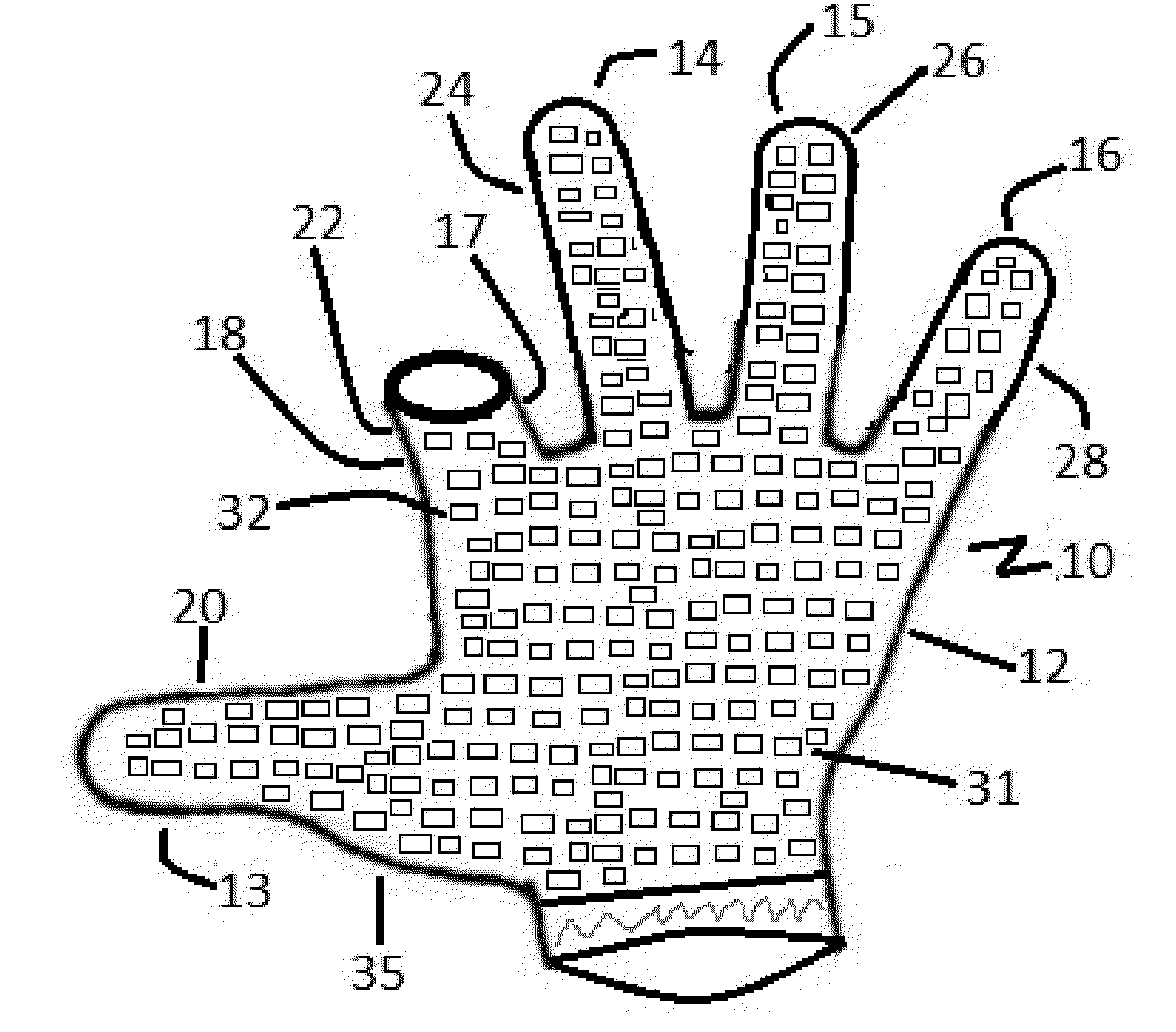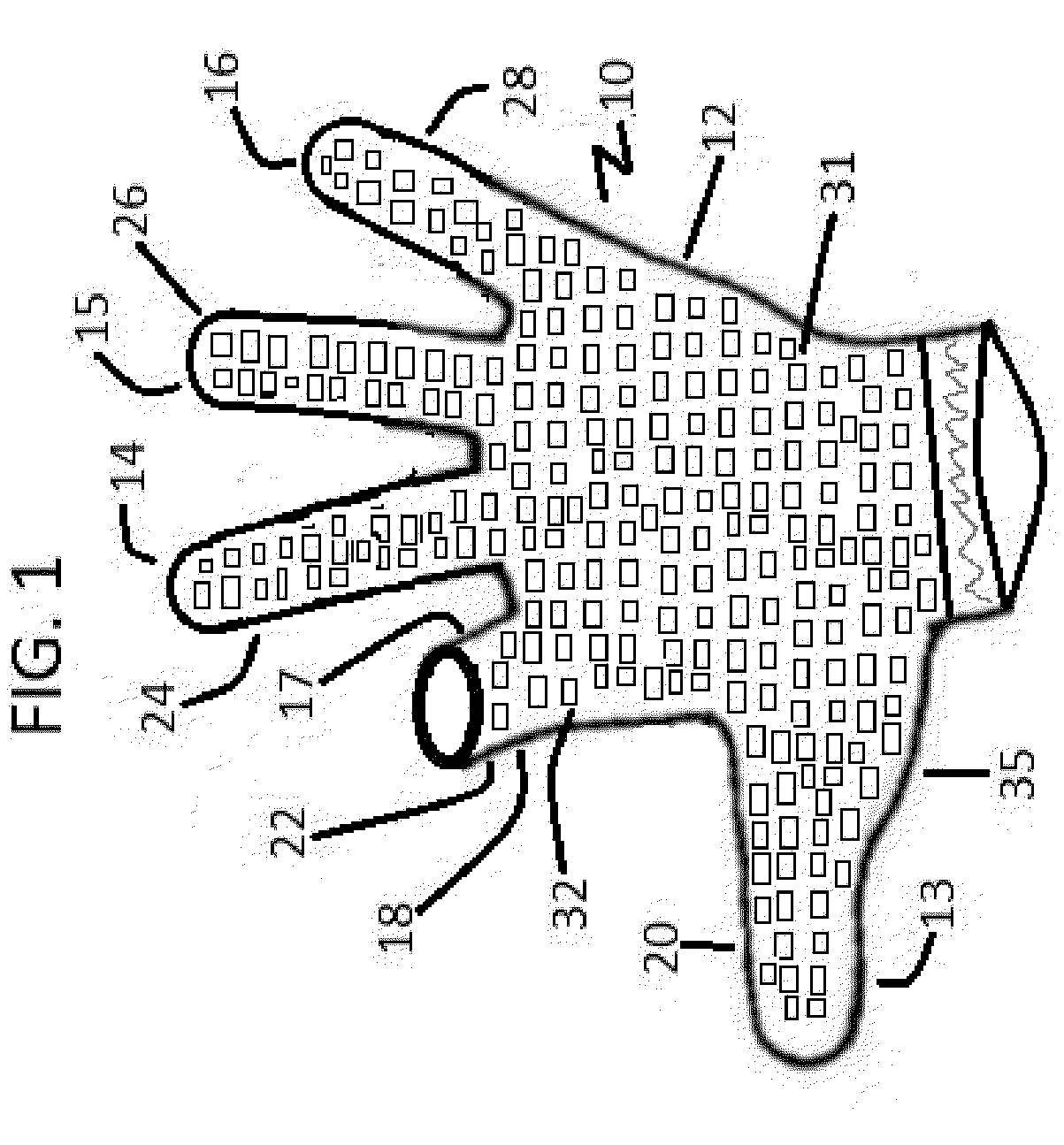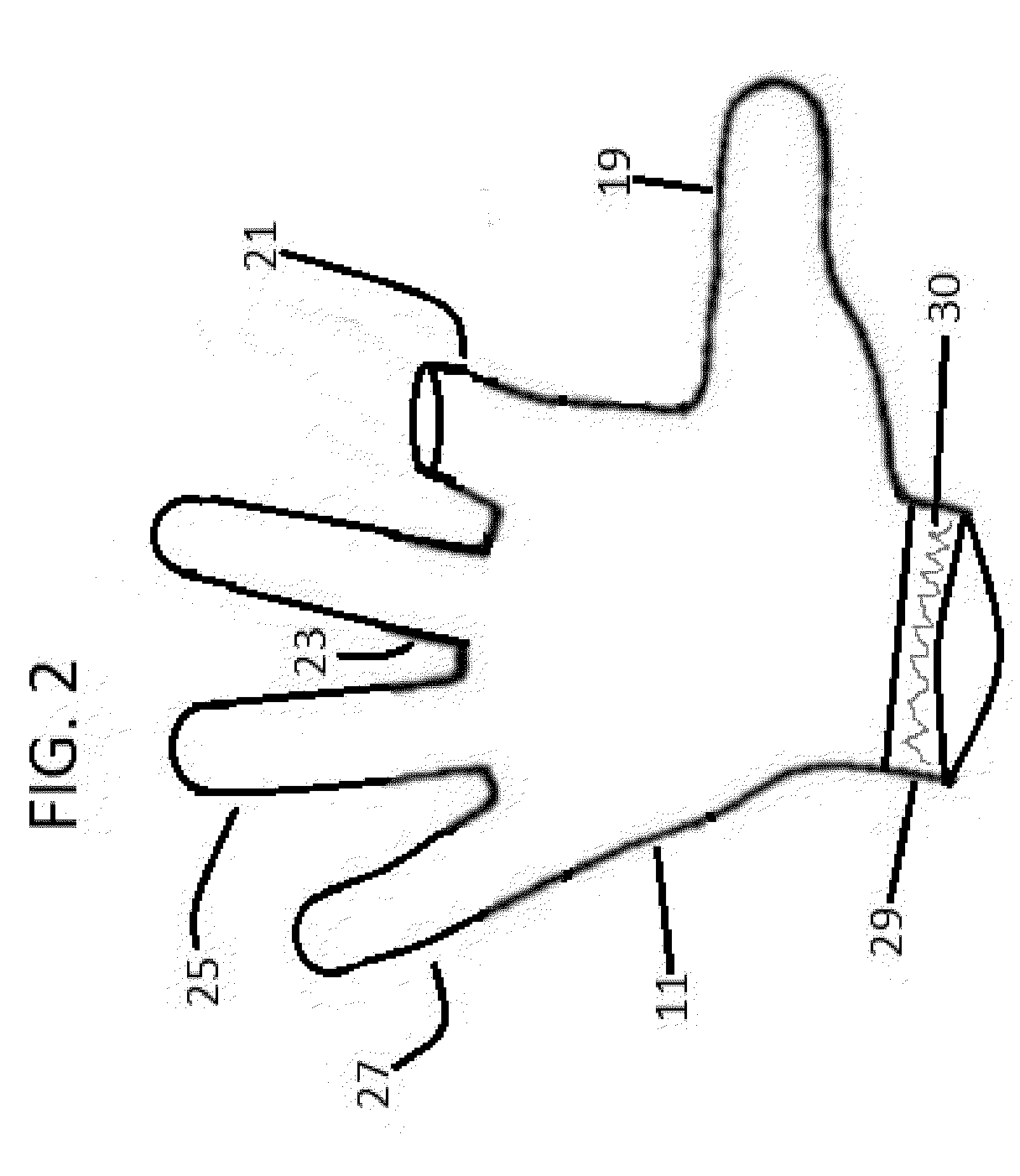Although generally useful, using prior art conventional gloves in some sports can come with significant drawbacks, especially if a user must use their hands to feel in addition to simply grip an object.
This need to feel the
golf club with a hand has therefore resulted in golfers having to make a difficult choice.
Playing the sport of golf without the help of gloves, however, can also be an inferior choice.
As the velocity of the
golf club increases, it becomes increasingly more difficult to maintain a tight grip on the club; this is especially true at the point of
impact with the
golf ball.
Golfers have generally decided to wear a glove on their weak-hand, thereby increasing the overall grip of the weak hand but, because prior art weak-hand golf gloves are full fingered and therefore cover all of the user's fingers, the weak hand loses significant tactile capabilities.
Although this method of gripping a
golf club, by wearing only one golf glove, does provide some
tactile sensation, the
tactile sensation is limited to only the dominant hand so that the weak hand loses significant tactile sensations.
This limitation of only allowing
skin contact by the dominant hand has often resulted in several problems such as: difficulty in weak-hand and dominant hand coordination because
skin contact between hands is blocked by the glove; difficulty in assessing proper golf club positioning by the weak-hand throughout the golf swing; and difficulty in getting proper feedback from weak-hand sensations if one completes an improper golf swing.
It is no surprise that golfers often have difficulty landing a
golf ball on the fairway, even at the highest performance levels, and currently remains an insoluble problem in the sport for amateurs and professionals alike.
There are other configuration challenges in prior art golf gloves that hinder those desiring to have a proper, consistent golf swing using a conventional golf grip.
Most conventional golf gloves, for example, have ventilation recesses along the dorsal portion of the digital segments including on the forefinger which of course can be counterproductive and problematic especially when gripping a golf club using the
interlocking grip.
This is problematic because the strong hand's pinkie finger interlocks and resides over the forefinger's
proximal phalanx.
Intentionally trying to channel
moisture to this interlocked area will clearly cause unnecessary slipping between the two interlocked fingers and further hinder the user's ability to perform a
unison, coordinated golf swing.
On the other hand, without any recesses on the forefinger segment,
moisture will inevitably build up within the forefinger segment, making it very uncomfortable for the user; if, however, the distal phalanx of the forefinger is uncovered, for example, any
moisture buildup in the forefinger segment will naturally flow out from the uncovered portion and away from the critical interlocked or overlayed portion.
If there is even the slightest separation between the two hands during the golf swing, the club face will not be square at
impact; the resulting open face
impact will inevitably result in a slice.
If the golfer is using prior art golf gloves, however, it is extremely difficult to feel if there is any hand separation throughout the golf swing because of the weak hand's
middle finger loss of significant tactile sensations by being completely covered by the glove.
 Login to View More
Login to View More  Login to View More
Login to View More 


